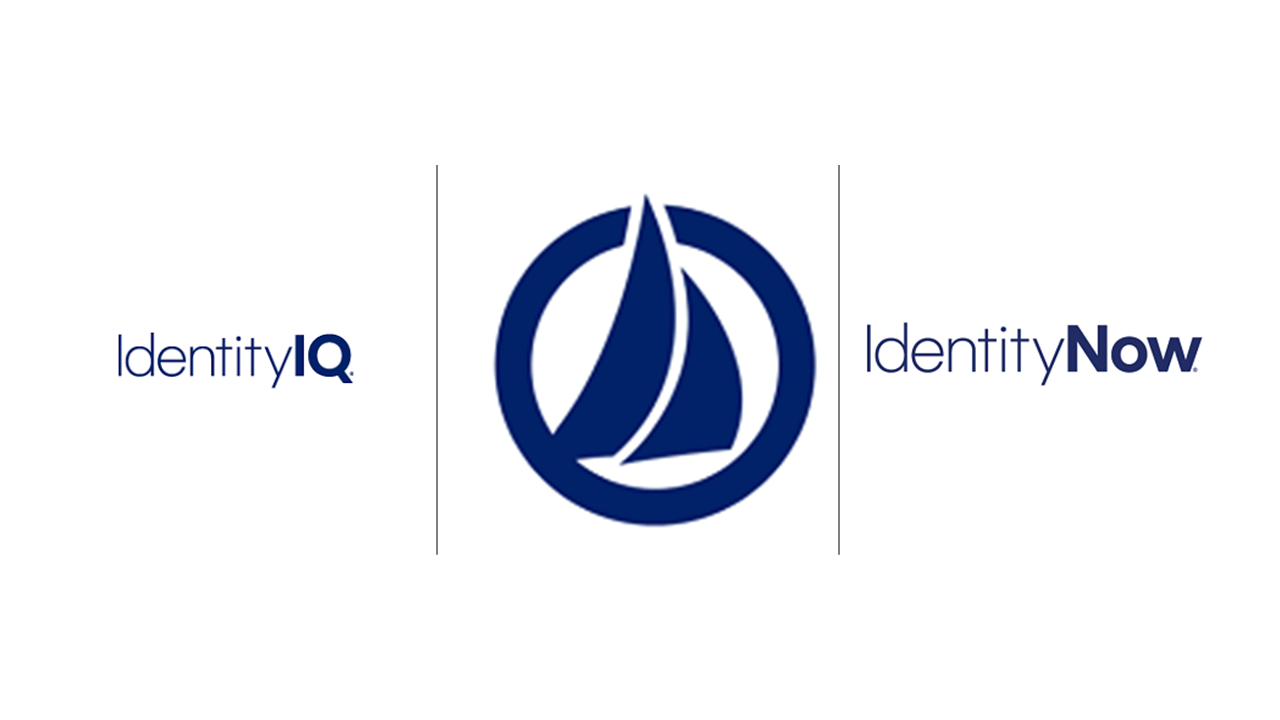
How to Retain Your Best Employees in Your Cybersecurity Team
13 Mar, 202412 minutesAlarmingly, around 70% of US workers are expected to leave their jobs in 2024. Of course, ov...

Alarmingly, around 70% of US workers are expected to leave their jobs in 2024. Of course, over time, the loss of talent will happen to your business as people move on, change career paths, and retire. However, this can create significant challenges for most companies, including those in cybersecurity. Thankfully, by developing an employee retention strategy, you can take the necessary steps to retain your cybersecurity talent and ensure your IT team remains loyal to your business.
In this guide on how to retain your best employees in your cybersecurity team, we’ll delve into what retention is, why it matters, how to calculate staff retention rates, and the steps you can take to retain your talent.
This guide will explore the following:
- What is employee retention?
- Why is employee retention important?
- How do you calculate employee retention rate?
- 5 steps to retaining top talent in your cybersecurity team
What is employee retention?
Employee retention is something all businesses in every industry, including cybersecurity, should be aware of and factor into their recruitment strategies. Centered around ensuring your productive and talented individuals stay loyal to your company, employee retention is ultimately an organization's capability to prevent voluntary or involuntary turnover in any given period.
Various factors can influence the difference between a high or low staff turnover rate. These factors can include an employee’s positive or negative feelings regarding their pay and compensation, opportunities for progression and work-life balance, whether they consider the workplace to foster a positive environment, and if their work gives them a sense of purpose and is appreciated and recognized by their employer.
Especially crucial during periods where unemployment rates are low, and competition for talent is high, employee retention aims to utilize various strategies to reduce the risk of staff leaving for new opportunities - perhaps for a competitor.
Employee retention directly influences a company's performance and success, and leading HR experts and hiring managers prioritize retaining talent as part of their strategic goals. A well-thought-out employee retention strategy is instrumental in mitigating the high costs associated with replacing lost employees.
Additionally, recognizing the often subtle signs that indicate when an employee may be contemplating leaving provides employers with a chance to intervene and implement measures to retain their valuable talent.
Later in this guide, we’ll delve deeper into these factors and explore their role in shaping effective employee retention strategies. However, let’s first establish why employee retention matters and how you can calculate your staff turnover rate.
Why is employee retention important?
Specifically in IT security, where the competition for top software engineers and developers is fierce, focusing your efforts on retaining your cybersecurity specialists is crucial for maintaining a skilled and stable IT team, and knowing why employee retention matters is essential before considering your strategy.
So, why is employee retention important? Here are the key reasons why employee retention matters and how its importance deserves a top spot on your agenda in the cybersecurity recruitment space:
- Employee productivity is affected by retention
- One point on why employee retention is important is that when your cybersecurity team is engaged and motivated, it directly translates into heightened productivity and efficiency levels. Their boosted productivity, due to the satisfaction they have working for you, can give you the confidence of knowing your IT infrastructure is secure and in safe hands whilst also leading to enhanced customer service and increased profits - a win-win for your organization.
- Maintaining the stability of your cybersecurity team
- A high staff turnover can disrupt the workplace, making it challenging to uphold a stable culture and an unorthodox IT team. Constantly changing teams, with employees frequently leaving, creates an unstable foundation that hinders productivity and incurs additional costs. Therefore, a robust employee retention strategy is essential for avoiding frequent talent departures and maintaining cohesion within your cybersecurity team.
- Consider the costs of hiring cybersecurity talent
- Another aspect of why employee retention is important relates to costs. The cost of losing a cybersecurity team member goes beyond their salary; it encompasses the expenses associated with hiring and training replacements. An employee's departure costs an average of 33% of their annual salary. Retaining staff over the long term can significantly reduce these costs, contributing to overall financial savings for your business.
- Enhances the creativity of your cybersecurity specialists
- If your IT team and cybersecurity experts feel valued in the workplace due to your well-thought-out retention strategy, they'll be more inclined to think innovatively and creatively. This creativity can lead to the development of new and optimized security protocols that keep your IT infrastructure secure and give you a competitive edge.
- Staff turnover affects your customers and clients
- It's important to note that your customers and clients can often tell when a business is experiencing employee turnover. They may see your talent has moved on via LinkedIn statuses or notice signs of low morale when speaking with your wider team. This can raise concerns regarding the state of your company and whether continuing to partner with you is best for them.
However, a well-implemented employee retention strategy can help ensure that your employees are aligned with your company's direction, which can translate to improved staff morale, customer satisfaction, and loyalty.
- You have the opportunity to create a positive work environment
- Our final point on why employee retention is important is how it allows you to establish a positive work environment by meeting the needs of your employees to increase the chances of them staying loyal to you. This positivity benefits the current team and serves as an attractive factor for potential new hires, contributing to the growth of your cybersecurity team.
With an understanding of why employee retention matters, let's move on to the topic of calculating employee retention rates.
How do you calculate employee retention rate?
When building a successful IT department, developing a strategy focused on retaining your top cybersecurity professionals should be a high priority. One additional consideration you should take before mapping out your talent retention plan is to know how to calculate employee retention rate within your IT team.
Understanding and calculating your employee retention rate is a valuable tool for establishing how effective your staff retention strategy is. By following some simple steps and a straightforward formula, you can determine the percentage of your cybersecurity and IT team remaining with your company during a specific period.
For context, the average staff turnover rate of professionals working in the cybersecurity industry is around 20%, which is quite alarming, considering a rate of 35% to 84% is generally regarded as good.
With that said, knowing how to calculate employee retention rate is simple and can be done via these steps:
Set your time period
- When calculating your employee retention rate, start by identifying the time period you want to measure. This could be over a year, a quarter, or several months.
Calculate your headcount
- Next, you should determine how many employees you had at the beginning of your selected time period. Here, you should only account for the employees actively working on the start date of your chosen period. Make sure to exclude any members of your cybersecurity team who joined the organization mid-period.
Subtract the employees who left
- Your next step should be to subtract the number of original employees left at the end of the period from the total number of employees you counted at the start. This result will be used to determine your percentage rate.
Divide your remaining staff members by your start total
- Now you should divide the sum of remaining employees by the total number of employees at the start of the time period. This calculation will yield a decimal solution representing the rate at which your cybersecurity talent has stayed in your organization.
Make the final calculation
- Finally, you should convert the decimal by multiplying by 100. A higher percentage indicates a more successful retention rate. However, if your percentage is low, it may be time to evaluate your approach to retaining talent.
For example, consider a scenario where your company had 100 cybersecurity specialists at the start of the year. Then by the end of the year, 95 remained with your company. In this scenario, your employee retention rate would be 95%.
Here’s the simple formula you can follow for calculating employee retention rate:
Your staff turnover rate = (Employees who left ÷ Remaining headcount) x 100
Regularly calculating your employee retention rate provides valuable insights into the success of your efforts to retain your talent. If you find areas for improvement, the following sections below will delve into effective strategies for enhancing employee retention in your cybersecurity team.
5 steps to retaining top talent in your cybersecurity team
You should consider your plan for retaining your cybersecurity talent as a key partner to your IT recruitment strategy. In terms of how to retain talent, there are five essential steps we’d like to highlight to help you improve your employee retention. These steps include giving your team a voice, investing in resources to support your people, encouraging progression and development, offering competitive compensation and benefits packages, and recognizing and rewarding your staff.
1. Give your cybersecurity team a voice
Establishing a transparent work environment is a pivotal step in enhancing employee retention strategies. One effective way to achieve this is by giving your IT and cybersecurity teams a voice.
Regular performance reviews or one-to-ones are key to giving your employees a voice whilst allowing you to build transparency. Whether done monthly, quarterly, or annually, these meetings should be facilitated by a senior team member who works closely with the individual on a daily basis. This should be conducted in a safe space, whether in person or remotely, to create an environment where employees are comfortable sharing their opinions and receiving feedback.
Allowing your cybersecurity team members to voice their opinions, whether it's about their performance, new product ideas, or personal matters, fosters an open and collaborative environment. Creating avenues for private discussions is essential and tells your employees that you value their input. If a staff member is unhappy, allowing them a voice can help you figure out how you can progress with the working relationship in a way that benefits you and the employee.
Inevitably, employees may move on to new opportunities. When this happens, adopting a positive approach during exit interviews becomes crucial. Instead of bitterness, give departing employees a chance to provide feedback on their experience, reasons for leaving, and suggestions for improvement. This valuable information can significantly contribute to refining your employee retention strategy.
2. Invest in resources to support your cybersecurity team
Another step on how to retain talent within your cybersecurity team is to invest in the best resources and latest technology to support them with their day-to-day tasks. The key here is not to spend indiscriminately on technology and resources. Instead, you should collaborate with your IT and cybersecurity team and encourage them to provide feedback on the latest tech trends and identify tools that could help them work more efficiently to achieve your business goals.
You know that your cybersecurity professionals are crucial in mitigating risks. It’s also essential to know that for your talent to combat the evolving nature of cyber threats, they require the tools for effective risk management. For example, without real-time visibility, your team may struggle to deploy controls promptly, leaving digital assets exposed. Investing in technology that provides continuous visibility into control processes could address this.
In addition to technology, maintaining high team morale is vital. Listening to your cybersecurity team, understanding their challenges, and working to remove any barriers hindering their productivity is essential. Recognize them as individuals, appreciate their contributions, and create an environment where they feel supported by the resources they need.
Investing in the latest technology can empower your cybersecurity team to tackle evolving threats and communicate your commitment to staying at the forefront of industry advancements. By combining technological investments with a supportive and understanding approach, you create a workplace that retains top talent and fosters innovation and growth.
Additionally, investing in the latest resources and tech will help position you as a tech-savvy competitor, instilling confidence in your cybersecurity specialists that their careers will only benefit by staying with your organization.
3. Encourage progression and development
Keeping your cybersecurity talent motivated is essential and goes a long way to helping you retain your best people. Prioritizing internal progression and development opportunities as part of your employee retention strategy is a perfect way to do this.
First, you should understand your talent's career goals and aspirations - doing so from the early stages of recruitment and onboarding. Soliciting feedback allows you to tailor progression and development initiatives to the unique needs of your people, ensuring they stay engaged and fulfilled in their roles.
Whether through internal sessions or external learning providers, you could also invest in training schemes to demonstrate a commitment to nurturing your cybersecurity and IT talent. It's a proactive step toward closing skills gaps and providing your team with the tools to progress in their careers and help futureproof your company.
Taking internal progression and development seriously in your retention strategy also blends into your succession planning. For example, if a senior or top cybersecurity specialist within your business leaves, requiring you to make a swift replacement, if you've consistently offered internal training and development opportunities, your internal talent pool will be prepared to seamlessly step into more senior roles.
While you'll need to make additional hires as you grow, promoting from within, whenever feasible, fosters internal career growth and strengthens employee retention. With a clear path for progression and development, your talented cybersecurity professionals may think twice before seeking opportunities elsewhere.
Ultimately, encouraging internal progression and development of your IT and cybersecurity talent is a reciprocal relationship. By offering development opportunities and internal progression, you inspire your team to reciprocate by investing their time and effort into your business. This creates a win-win situation where employees feel valued and motivated to contribute their expertise to the growth and success of your business.
4. Offer competitive compensation and benefits packages
Offering competitive compensation is another essential step to help retain the top talent in your cybersecurity team. To ensure your packages are attractive, benchmark them against industry standards and local and global market rates, considering elements such as base salary, bonuses, incentives, and benefits.
Achieving the right compensation requires an understanding of the cybersecurity market and alignment with your talent and business strategies. Here are some of the things to consider:
- Identify your competitors: Determine the companies you are competing against for talent, factoring in size, industry, and location variations.
- Competitive positioning: Decide how competitive you want to be relative to others hiring from the same talent pool. Consider your financial situation and target percentages based on the roles and skill sets you have within your cybersecurity team.
Leverage preferences: Understand your ideal employees' values, whether they prioritize cash incentives, flexible work arrangements, career growth potential, learning and development opportunities, or healthcare benefits. We suggest referring to our point on giving your staff a voice as an excellent way to identify what your employees want in return for their great work.
Be aware that your in-demand and high-performing talent may command rates above market averages, especially if they have extensive experience or receive offers from elsewhere. Research industry-specific salary data to determine the typical compensation for your area and set boundaries for how far you're willing to stretch to keep hold of your talent without compromising the company's future.
Explore the possibility of offering unique perks that larger companies may not provide, such as additional paid time off or on-site daycare facilities. Enhancing your compensation and benefits packages can make your organization stand out, contributing to employee retention and talent attraction.
5. Recognize and reward your cybersecurity team
Our final step on how to retain your best employees within your cybersecurity team involves recognizing and rewarding the exceptional efforts of your people. Your staff is likely to be more engaged when they feel recognized and appreciated by you and
implementing effective recognition strategies can boost their morale and loyalty.
Here are some of the things you could offer to your cybersecurity specialists to recognize and reward their excellent contributions to keeping your business secure from various cyber threats:
- Pay bonuses: Acknowledge outstanding performances through monetary rewards such as pay raises and bonuses.
- Company away days: Foster team camaraderie by organizing company outings or events.
- Gift cards and points schemes: You could provide your cybersecurity talent with gift cards as tokens of appreciation.
Extra paid time off: Recognize hard work by offering additional time off to individuals who go above and beyond.
When designing your recognition plan, ensure you get the thoughts of your cybersecurity team. Seek their input through feedback sessions to understand their preferences and desires, and never assume what you think they’ll like to receive in return for their efforts.
Celebrating the achievements of your cybersecurity team can significantly contribute to a positive work culture. Consider showcasing their accomplishments through case studies and internal communications, amplifying their impact on social channels.
Recognizing and rewarding your cybersecurity team is not just a gesture of appreciation; it's a strategic investment in employee retention and the overall success of your brand. By valuing and celebrating your talent, you create an environment where they feel motivated, engaged, and committed to your organization's long-term goals.
The final word on retaining top talent in your cybersecurity team
Retaining top talent in your cybersecurity team is critical to ensuring your organization's stability, productivity, and success. Employee retention is not only about preventing turnover but also about fostering a positive work environment that enhances creativity, maintains team morale, and positively impacts customer satisfaction. By calculating and monitoring your employee retention rate, you determine the effectiveness of your strategies.
To summarise, here are the five essential steps for retaining your best employees in the cybersecurity field:
Give your cybersecurity team a voice: Establish transparent communication channels, conduct regular performance reviews, and value employee feedback to create an open and collaborative environment.
Invest in resources: Provide the latest technology and resources to support your cybersecurity team, demonstrating a commitment to their success and keeping your organization competitive in the tech industry.
Encourage progression and development: Prioritize internal career growth, offer training opportunities, and align development initiatives with the unique needs and aspirations of your cybersecurity professionals.
Offer competitive compensation and benefits: Benchmark your compensation packages against industry standards, consider market rates and tailor benefits to the preferences of your cybersecurity talent to attract and retain the best in the field.
Recognize and reward: Implement effective recognition strategies, such as pay bonuses, company events, gift cards, and extra paid time off, to appreciate and celebrate the exceptional efforts of your cybersecurity team.
By incorporating these strategies into your overall talent management and recruitment efforts, you can create a workplace that retains top talent and fosters innovation, growth, and long-term success in the cybersecurity sector.
Specialists in cybersecurity recruitment
If you're looking for support on how to retain your best employees or are seeking to grow your cybersecurity team with the best talent on the market, we can help. Our IT recruitment experts have access to the top professionals who can implement IT security solutions to help keep your business secure.
Contact us today to discuss your specific cybersecurity recruitment needs.





